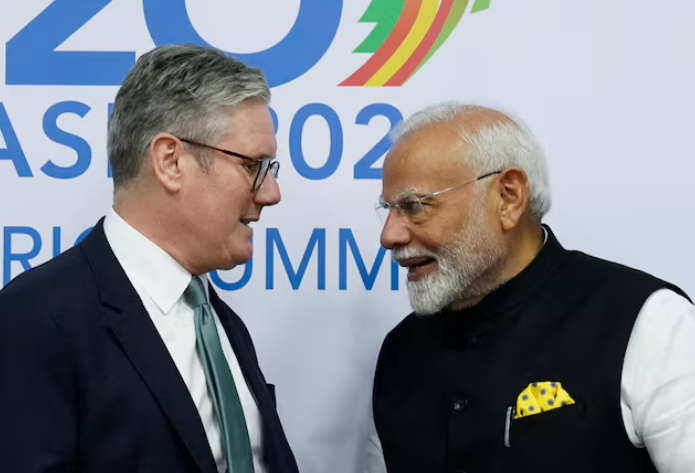
On July 23, 2025, Indian Prime Minister Narendra Modi embarked on a state visit to the UK, marking a historic moment in bilateral relations. During the two-day visit, Modi and British Prime Minister Keir Starmer signed a "landmark" free trade agreement (FTA), injecting new impetus into the global trade landscape in the post-Brexit era. This agreement not only aims to deepen India-UK economic cooperation, but is also seen as a strategic coordination between the two democracies in the new global order, and its impact will radiate to geopolitics, industrial upgrading and the reconstruction of international trade rules.
Under the terms of the agreement, India will significantly reduce 90% of tariff lines, of which 85% of goods will achieve zero-tariff access in the next 10 years. The impact of the agreement on specific industries is particularly far-reaching. The Scottish whisky industry will gain deep access to India, the world's largest consumer market, and is expected to increase exports by £1 billion in five years. The automotive sector adopts a "progressive quota system", initially allowing 100,000 British electric vehicles to enter India at preferential tariffs, clearing the way for Jaguar Land Rover and other automakers to expand production in India. In addition, the Indian pharmaceutical industry has obtained an extension of the transition period for drug patents, while the UK has made a breakthrough in entering the Indian financial services market (such as the establishment of a Lloyd's of London branch in Mumbai). This industry-level opening model not only optimizes resource allocation, but also promotes the upgrading of the roles of the two countries in the global industrial chain.
At the geopolitical level, the agreement is endowed with multiple strategic implications. India uses the agreement to consolidate its position as a "global leader in the South" and strengthen its economic alliance with the Western democratic camp; the UK uses India as a springboard to build an "Indo-Pacific Economic Corridor" to hedge trade losses after Brexit. The agreement specifically adds a "digital trade security clause", and the two countries will share cross-border data rules to form an institutional check and balance on emerging economies. This narrative of "economic alliance of democratic countries" reflects the transformation of the cooperation model between countries in the post-globalization era - from a simple economic interest binding to a deep binding of values and rules system.
Although the agreement has a bright future, the implementation process still faces multiple challenges. In terms of non-tariff barriers, India retains additional clinical trial requirements for British drugs, and companies such as Pfizer need to wait longer for approval; there are also concerns about trade balance. The UK's service trade surplus may expand. Whether India's manufacturing industry can achieve rebalancing through "UK-EU re-export" remains to be seen. In addition, domestic political resistance cannot be ignored: the British Fisheries Association protested against India's zero tariff on shrimp, and Indian farmers are worried that Scottish lamb will impact the local industry. The deeper challenge lies in the coordination of rules-the UK needs to find a balance between EU standards and Indian regulations, and compliance costs may eat up the profits of small and medium-sized enterprises.
The India-UK Free Trade Agreement breaks the traditional "North-South cooperation" framework and builds a partnership of "civilized countries" in the rise. It adopts innovative mechanisms such as phased tax reduction, quota system, and rule sharing, providing an institutional model for Globalization 2.0. This agreement not only helps Britain "return to the center of the global stage", but also promotes the rebalancing of power in the Asian century. In the future, its ripple effect may trigger a chain reaction: Vietnam copies India's automobile tariff preferences, the EU is wary of Britain's circumvention of tariff barriers, and the United States may refer to its model to adjust tariffs on China-the global trade map is being quietly rewritten.
In an era of rising protectionism, India and the UK have found ways to coexist through institutional innovation, writing a key footnote for a new global trade order of pluralistic co-governance. This landmark agreement is not only about bilateral prosperity, but also points to a new era of globalization that is being reconstructed, more resilient, and more diversified and balanced.

The U.S. third-quarter GDP growth rate, strikingly highlighted at 4.3%, not only surpassed market expectations but also earned the label of "the fastest in two years."
The U.S. third-quarter GDP growth rate, strikingly highligh…
Recently, US personnel intercepted a "Century" super oil ta…
According to Xinhua News Agency, the subtle changes in the …
The rapid development of artificial intelligence has brough…
In December 2025, Taiwan's political scene was shaken by a …
When Apple appears for the Nth time on the list of penaltie…